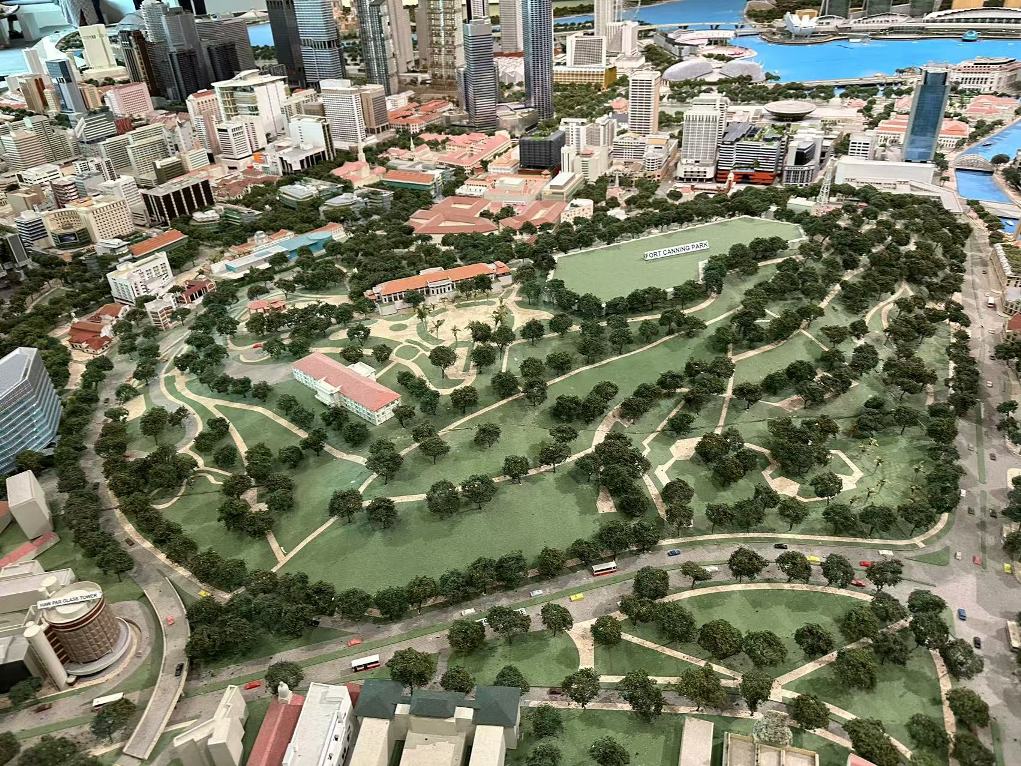|
Fort Canning Park in Singapore has a
rich history, including its role as a royal palace, a botanical garden,
a military base, and the site of a key decision in World War II:
14th century
The hill was home to five Malay kings, and was known as Bukit Larangan,
or "Forbidden Hill". It was also the site of a large palace, as
evidenced by sandstone foundation blocks discovered by early colonials.
1822
Sir Stamford Raffles built his bungalow on the hill and established the
first botanical gardens.
1861
A military fort was built on the hill, and it was renamed Fort Canning.
The hill became known as Fort Canning Hill.
1942
British Lieutenant-General Arthur E. Percival made the decision to
surrender Singapore to the Japanese in an underground command center
deep within Fort Canning Park.
Today
Fort Canning Park is a heritage site with historical gardens, walking
trails, and programs that showcase the park's history. Some of the
things you can see and do at Fort Canning Park include:
Heritage galleries: Learn about the city's history through artifacts,
replicas, and stories
Colonial History Trail: Learn about Singapore's colonial history
Spice Garden: Learn about the history and practical uses of spices
Artisan's Garden: Learn about the artifacts found in the soil through
ceramic handling activities
 |
|
Fort
Canning Park in Singapore is a historic hill that has played a
significant role throughout the island’s history. Here’s a brief
overview:
1. Ancient Origins: Known as Bukit Larangan or “Forbidden Hill” in
Malay, Fort Canning was once a sacred site for the ancient Malay rulers.
Archaeological excavations have found artifacts dating back to the 14th
century, suggesting it was an important settlement during the reign of
ancient Malay kings, possibly connected to the kingdom of Temasek, a
predecessor to modern Singapore.
2. Colonial Era: In the 19th century, when the British arrived, Sir
Stamford Raffles, the founder of modern Singapore, recognized Fort
Canning’s strategic value due to its elevated position. He built his
residence here, and the hill was later renamed Government Hill.
3. Military Significance: Fort Canning became a key military base in the
1860s when a fort was constructed, hence its current name. The British
installed artillery batteries to defend Singapore from potential naval
attacks. During World War II, it served as the headquarters for the
British Far East Command. This was where the decision to surrender
Singapore to the Japanese forces was made in 1942.
4. Post-War and Modern Era: After World War II, Fort Canning continued
to serve military and administrative functions until it was eventually
decommissioned. Today, it’s a public park featuring historical sites,
including bunkers, colonial buildings, and a replica of Raffles’
residence. It’s a popular destination for cultural events, historical
tours, and recreation.
Fort Canning Park thus embodies Singapore’s rich history, blending
ancient, colonial, and modern influences in one site.

|
新加坡的福康宁公园是一座历史悠久的山丘,在新加坡的历史上发挥了重要作用。以下是简要概述:
1. 古代起源:福康宁在马来语中被称为 Bukit Larangan 或“禁山”,曾是古代马来统治者的圣地。考古发掘发现了可追溯Zhuīsù到 14
世纪的文物,表明它是古代马来国王统治时期的一个重要定居点,可能与现代新加坡的前身淡马锡王国有关。
2. 殖民时代:19
世纪,当英国人抵达时,现代新加坡的创始人斯坦福莱佛士爵士认识到福康宁因其高地的战略价值。他在这里建造了自己的住所,这座山后来改名为政府山。
3. 军事意义:19 世纪 60 年代,福康宁成为一个重要的军事基地,当时建造了一座堡垒,因此得名。英国人设置了炮台来保护新加坡免受潜在的海军攻击。二战期间,它曾作为英国远东司令部的总部。1942
年,英国正是在这里决定将新加坡交给日本军队。
4. 战后和现代时期:二战后,福康宁公园继续发挥军事和行政职能,直到最终退役。
如今,它是一个公共公园,拥有历史遗迹,包括碉堡、殖民时期建筑和莱佛士住所的复制品。它是举办文化活动、历史之旅和休闲娱乐的热门目的地。
因此,福康宁公园体现了新加坡丰富的历史,将古代、殖民时期和现代的影响融为一体。
|
![]()

